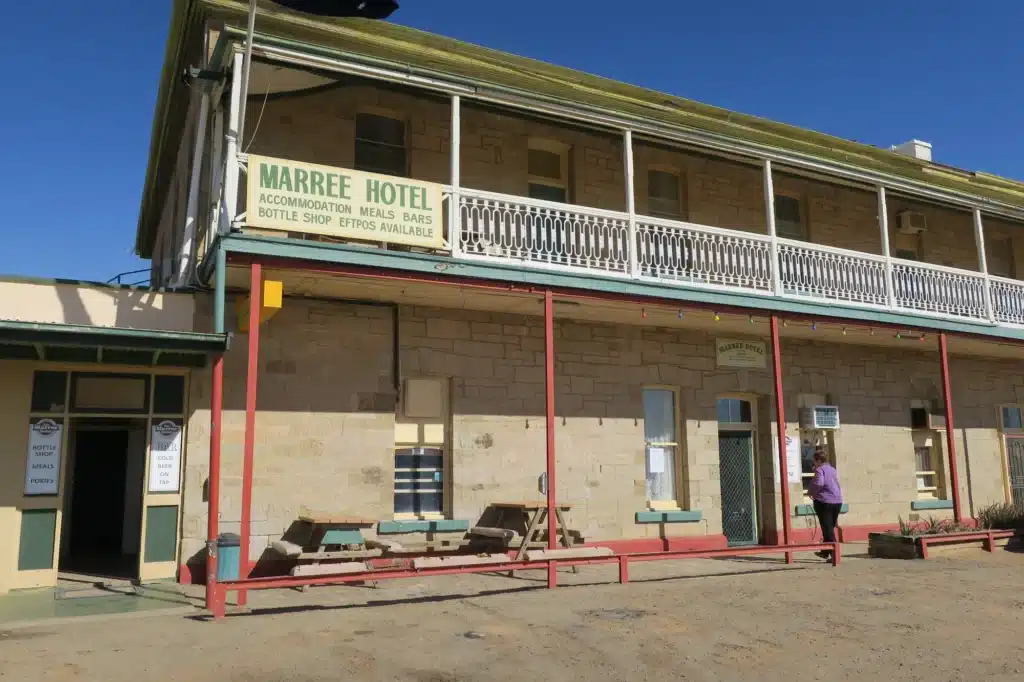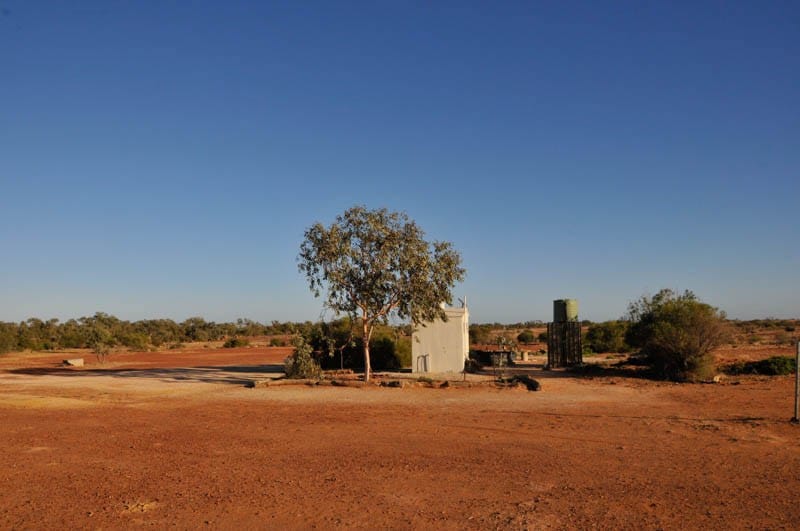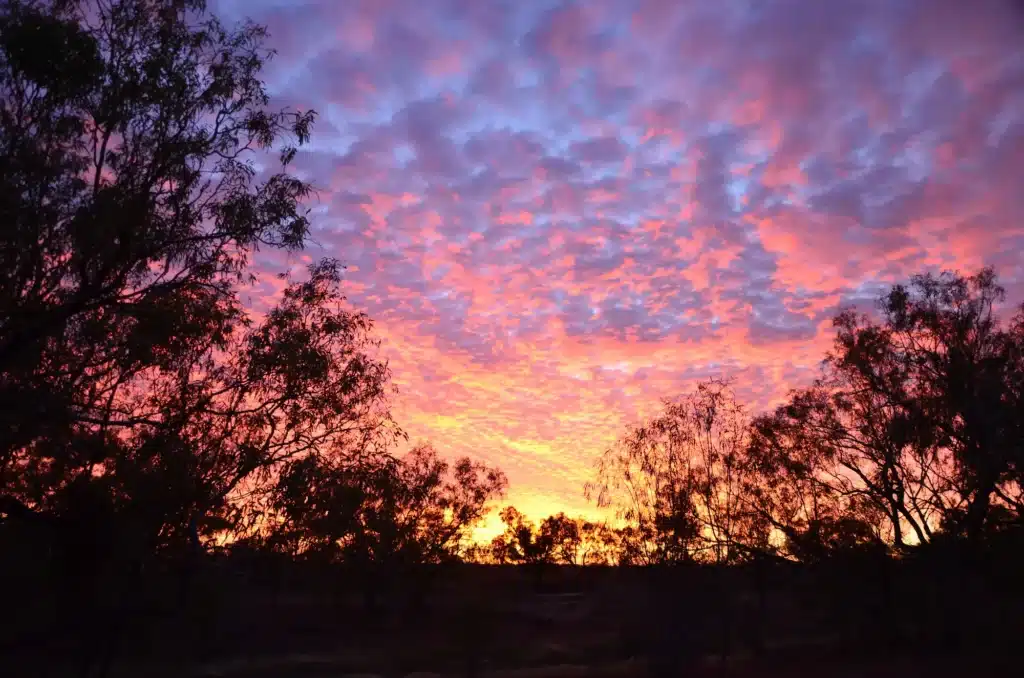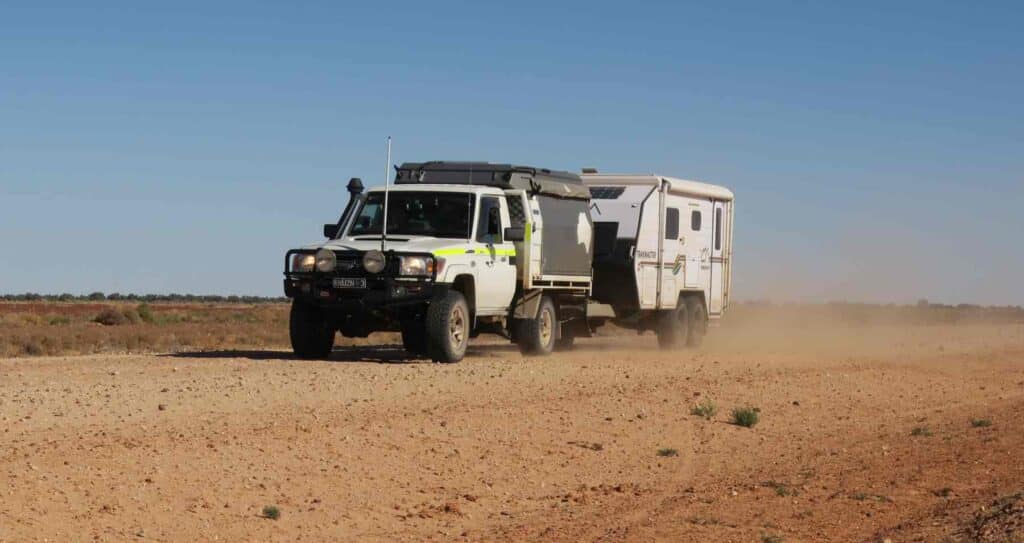7 essential stops on the Birdsville Track for caravanners




Far from the hustle of city life, the legendary Birdsville Track stretches 517 kilometres through some of Australia’s most remote and beautiful desert country. Running from Marree in South Australia’s north to Birdsville just over the Queensland border, this iconic outback route offers the perfect opportunity to experience genuine remote travel with your caravan.
Whether you’re an experienced outback traveller or planning your first big adventure, tackling the Birdsville Track with a caravan is more manageable than you might think—when conditions are dry and you’re well prepared. We’ve picked out seven essential stops and must-know locations along this historic stock route to help you plan your journey. And although we’ve focused on the key spots, there are plenty of other places to pull up and camp along the way.
As usual, you should always be prepared with plenty of water, good tyres with spares, and a well-stocked recovery kit for off-grid camping. Top tip: keep your speed down (50-60km/h is perfect), deflate your tyres by about 10psi, and never attempt this track if it’s been raining or looks like rain.

Located approximately 670 kilometres north of Adelaide in the Flinders Ranges, Marree marks the southern start of the Birdsville Track. This is your last chance to stock up on supplies before heading into the remote outback.
This historic town sits at the junction of the Birdsville and Oodnadatta Tracks. It offers everything you need before your adventure begins. The heritage-listed Marree Hotel is an Australian icon, built in 1883. It serves up cold beer, hearty meals, and a fascinating look at the area’s history through its museums showcasing outback mailman Tom Kruse and explorer John McDouall Stuart. If you’re lucky enough to be staying on a Friday night, don’t miss their legendary $20 roast buffet.
For accommodation, you’ve got two excellent caravan park options. The Marree Hotel offers 28 ensuite cabins plus traditional hotel rooms, along with free parking for caravans and campers. Alternatively, Marree’s Oasis Caravan Park provides 39 ensuite cabins plus powered and unpowered sites with clean facilities. Both offer a warm welcome and the chance to chat with fellow travellers around the campfire.
Take your time here. Grab a meal at the pub, stock up on supplies at the roadhouse, and perhaps book a scenic flight over Lake Eyre if you’re visiting when it has water. Marree is your last taste of civilisation for a while, so make the most of it.
Marree sits at the end of the sealed road, about 670km north of Adelaide. Follow the A87 through Port Augusta and Lyndhurst. Once you reach Marree, you’ve hit the beginning of the gravel. The Birdsville Track starts from here and heads north.
Fill up with fuel (both unleaded and diesel available), top up your water tanks, and stock up on food supplies. The roadhouse has limited fresh produce. It’s best to bring fruit and vegetables from larger towns. Grab cash if you need it, as EFTPOS can be unreliable once you head further north. Check your tyres and have all your spares ready to go.

Just 53 kilometres north of Marree, Clayton Station offers the perfect first-night stop to ease into outback travel. This pastoral property provides an oasis-like camping area that breaks up the journey beautifully.
The campground sits on the edge of the Clayton River. It offers facilities that’ll make you feel surprisingly pampered for the outback. You’ll find flush toilets, hot showers, and—here’s the best bit—a hot artesian spa where you can soak away the day’s driving while watching the sunset. The spa comes from an artesian bore and provides the perfect way to relax after your first taste of the gibber-covered track.
The camping area spreads over a lovely flat space with some shade trees. You’ll need to bring your own firewood (no chainsaws please—save the trees). There’s plenty of room to set up even the largest rigs. The peaceful setting along the river makes for excellent birdwatching.
Clayton Station has also recently added two luxury self-contained units, each with two bedrooms. If you’d prefer a roof over your head, these are ideal. The station even offers five-day trail ride adventures on their working cattle property if you’re keen to extend your stay.
Clayton Station is clearly signposted on the Birdsville Track, 53km north of Marree. You can see the toilets and water tanks from the main track. The campground sits on one side of the track, with the station on the other. You can’t miss it.
The camping here suits all types of rigs—caravans, camper trailers, motorhomes, and tents. Sites are unpowered, so make sure you’ve got sufficient battery capacity or a generator. Remember to bring your own firewood, as chainsaws aren’t permitted on site. The facilities include toilets, showers, and that wonderful hot tub, but there’s no shop. Bring everything you need. Pets are permitted. Camping fees are collected via an honesty box.

Around 200 kilometres north of Clayton, you’ll come across Cooper Creek. This is one of Australia’s most famous inland waterway systems. The track crosses the normally dry creek bed here. Recent years have seen unusual flooding bringing water to this remote area.
The official campsite at Cooper Creek offers basic but essential facilities—a toilet and drinking water. You’re permitted to camp within a one-kilometre radius of the toilet. This gives you plenty of options to find the perfect spot. You can choose shade (limited) or prefer a more open area with views across the creek bed.
Cooper Creek has deep history as part of the Burke and Wills expedition route. When it flows, it creates an amazing transformation of the landscape. Even when dry, the creek bed provides interesting camping spots. The red earth contrasts beautifully against the usually blue outback sky.
Be aware that when Cooper Creek is flowing, you may need to take the wet weather bypass route via Etadunna Station. A ferry service operates—though it won’t take caravans. Always check conditions before you go. If there’s been rain in the north, this crossing can become impassable.
Cooper Creek crossing sits roughly halfway between Clayton and Mungerannie, about 200km north of Marree. You’ll see the creek crossing and campsite signage from the main track. The camping area is well marked with the toilet facilities clearly visible.
This is genuine bush camping, so be completely self-sufficient. There’s drinking water and a toilet, but nothing else. Bring all your food, firewood (there’s very little to collect here), and ensure you have sufficient battery power or fuel for generators. The camping is free, but you need to be prepared for no facilities beyond the basics. Take all your rubbish with you when you leave.

At approximately 204 kilometres north of Marree (and 313 kilometres south of Birdsville), the Mungerannie Hotel is the only place to get fuel, food, and a cold beer along the entire Birdsville Track. This quirky outback pub is a true oasis in the desert. It sits on the edge of the Sturt Stony, Tirari, Simpson, and Strzelecki deserts.
No trip down the Birdsville Track is complete without a stop at Mungerannie. The pub serves everything from bacon and egg rolls to pies, burgers, and proper sit-down meals including their famous slow-cooked beef cheeks. The bar displays hats, caps, snippets of hair, flags, stubby coolers, and all manner of memorabilia left by travellers over the years. The ceiling literally strains under the weight of it all.
Time your run so you can drop in for lunch or dinner. Enjoy a toasted sandwich and a chat with the friendly staff. Soak in the therapeutic warm waters of their artesian bush pool next to the wetlands. The wetlands themselves are a permanent feature fed by an artesian bore. They attract incredible birdlife—bring your camera.
For accommodation, Mungerannie offers basic cabin-style rooms (some with ensuite, others with shared facilities) and camping sites along the Derwent River with clean shower and toilet facilities. They also sell tyres and can help with minor repairs—vital services when you’re this far from anywhere.
Mungerannie Hotel sits right on the Birdsville Track, about 204km north of Marree. You can’t miss it—it’s the only building you’ll see for hundreds of kilometres. The pub sits alongside the wetlands and the Derwent River, making it easy to spot from the track.
Bring cash or card for fuel (unleaded and diesel available), meals, and accommodation. Call ahead before you depart Marree to check fuel availability—phone (08) 8675 8317. Fill up here even if you think you have enough to make it to Birdsville. It’s always better to have a safety margin. The camping facilities are basic but clean, with access to showers and toilets. If you’re planning to stay in a room, book ahead during busy periods (especially around the Birdsville Races in September).

About 180 kilometres south of Birdsville (or 134 kilometres north of Mungerannie), you’ll find Tippipila Bush Camp. This is your last designated camping spot before reaching Birdsville. It’s a basic setup, but welcome nonetheless.
The facilities here are minimal—a toilet and a basin with bore water. It’s a practical spot to camp for the night if you’re breaking your journey into manageable chunks. There’s plenty of flat space to set up, though like many spots along the track, shade is limited.
Tippipila represents the last leg of your journey, with only 180 kilometres to go until Birdsville. This is a good place to check over your rig one more time. Make sure everything’s still secure after the corrugations and prepare for the final push north. The sunset views here can be spectacular. The desert landscape turns beautiful shades of red and orange as the day ends.
Tippipila Bush Camp is clearly marked on the Birdsville Track, approximately 180km south of Birdsville. Look for the toilet block and camping area signage. It’s visible from the main track.
Come completely self-sufficient. There’s a toilet and basin with bore water, but that’s all. Bring all food, drinking water, firewood, and everything else you need for an overnight stay. This is free camping, but you must take all rubbish with you. Ensure you have sufficient fuel to reach Birdsville. It’s your last 180km stretch.

After 517 kilometres of gibbers, corrugations, and stunning desert scenery, you’ll roll into Birdsville. This tiny Queensland town marks the northern end of the track. With a permanent population of around 100 people (swelling to thousands during the September races), Birdsville is remote, charming, and full of outback character.
The famous Birdsville Hotel is an absolute must-visit. Grab a cold beer in the bar, enjoy a meal in the Green Lizard Bar, and soak up the atmosphere of one of Australia’s most iconic outback pubs. The hotel offers motel-style accommodation out the back if you’re ready for a proper bed.
For caravanning, the Birdsville Tourist Park offers 84 powered sites suitable for the largest rigs. They also have unpowered sites spread over 30 acres next to the beautiful Birdsville Billabong. They also have ensuite cabins if you fancy a break from the van. The park gets incredibly busy during race week in September (no drive-through sites available then). Book ahead if you’re visiting during peak times.
Don’t miss driving out to Big Red, the famous 40-metre sand dune 35km west of town on the edge of the Simpson Desert. Watching sunset from the top of Big Red is a bucket-list experience. Views stretch endlessly across the desert. The Birdsville Bakery is legendary for its pies—get there early as they sell out fast.
Birdsville marks the northern end of the Birdsville Track, sitting just over the Queensland border. From Marree, you’ve travelled 517km north through the outback. Once you arrive in town, the tourist park and hotel are clearly signposted.
Fuel is available (both unleaded and diesel), and there’s a well-stocked general store for supplies. The tourist park has powered and unpowered sites, with excellent facilities including hot showers, toilets, and laundry. Phone ahead to book during busy periods—(07) 4656 3214. The Birdsville Visitor Information Centre can provide maps and information about local attractions and road conditions. If you’re planning to tackle the Simpson Desert, this is where you finalise your preparations.

Before you hitch up the van and head north from Marree, there are some critical things every caravanner needs to understand. Getting this right makes the difference between a fantastic adventure and a stressful ordeal. Here’s what you need to know about taking your caravan on the Birdsville Track.
Never travel if it’s been raining. This is non-negotiable. While plenty of vehicles tackle the track when wet, we absolutely don’t advise it with a caravan. When very wet, the bypass ferry operates and won’t take caravans anyway. The track becomes treacherous when damp. You risk getting bogged or causing damage to both vehicle and van. For safe outback driving, always check conditions before departing.
Your tyres are everything. Both your vehicle and caravan need quality all-terrain tyres with plenty of tread. You must carry adequate spares. The gibbers (small rocks covering much of the track) are tough on tyres. They cause punctures and sidewall damage. Deflate your tyres by about 10psi for a softer ride and better handling. One experienced traveller recommends putting cardboard across your rear window and gas bottles. This protects them from rocks kicked up by the tyres.
Slow down and stay alert. There’s no need to travel faster than 50-60km/h. The track has patches of soft sand, corrugations, and those relentless gibbers that can flick your van around at speed. The surface is good most of the time, but it’s patchy in places. You’ll find mild ruts where people have ploughed through mud. Keep your speed in check, stay attentive, and give yourself plenty of space from other vehicles. A rock through your windscreen is an expensive lesson. Check out our guide on desert driving techniques before you go.
Check your van thoroughly. Everything must be well packed and secured. The vibrations and bumps from the road surface will test every bolt, screw, and fitting on your van. Pack like you’re crossing the Simpson—if it can move, secure it properly. Some lightweight items may end up rattling loose despite your best efforts. Consider checking your wheel bearings before departure.
Travel during the cooler months. April to September offers the most comfortable temperatures. October to March brings extreme heat (37-46°C), very little traffic, and conditions that are genuinely dangerous if you break down. If you must travel in summer, carry extra water and be prepared for the heat.
Start with a thorough mechanical inspection. Check your suspension, wheel bearings, brakes, and all lights. Ensure your vehicle has appropriate towing capacity with some margin for safety. Pack a complete recovery kit including snatch straps, shackles, shovel, and traction boards. Carry a quality air compressor and deflator, plus a tyre repair kit. If you’re worried about outback breakdowns, preparation is your best defence.
Pack plenty of drinking water (much more than you think—consider 10+ litres per person per day in summer). Bring a comprehensive first aid kit and UHF radio (critical for communication). Carry spare tyres for both vehicle and van, plus extra fuel (calculate conservatively and add a safety margin). Don’t forget good quality bug spray (the mozzies and flies are relentless) and all your food. Mobile phone coverage is extremely spotty to non-existent across long stretches. Consider a hybrid caravan if you’re planning regular outback adventures.
The bottom line: The Birdsville Track with a caravan is absolutely achievable when you’re properly prepared. Travel at sensible speeds and respect the remote environment. It’s remote, it’s challenging, and yes, you might get some dust in the van or a stone chip on your paintwork. But the experience of crossing this legendary outback route is worth every kilometre.
We wish you safe travels, memorable outback experiences, and many wonderful nights camped under the stars along this iconic Australian track. Here’s to the adventure of a lifetime!